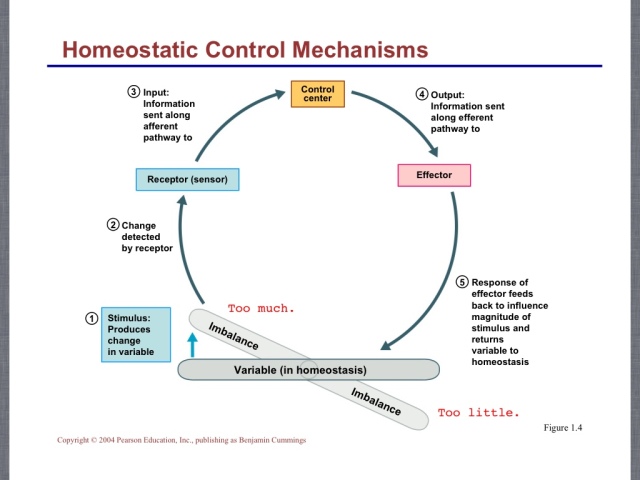We’re going to go ahead and jump right in and get started with the A&P blog posts! The first topic we’re going to cover, as the title suggested, is homeostasis! While this sounds extremely complex (let’s face it, when does a science term not?), it really is something very simple. In fact, homeostasis is something that you deal with every single second of every single day, even if you don’t realize it.
So now for the real reason you are here: what is homeostasis? To put it simply, homeostasis is the balance of the natural phenomena within a system. This term can be considered for anything from an entire ecosystem of animals, to a single organism. For our purposes here today, we are going to be focusing on human homeostasis. Human homeostasis is the balance of the organ systems within the body to maintain the body’s normal conditions, despite the forces of the outside world. Every organ contributes one way or another to ensuring your body remains as “regular” as possible in adverse conditions.
Let’s pretend, for example, that you are outside one afternoon during a hot, summer day. The longer you stay under the blazing sun, the warmer your body will become. At some point, your body’s internal temperatures will exceed what is normal. When this happens, your body will react by producing sweat, which will in turn cool you down (your sweat evaporates off your skin, which removes heat). In this instance, your body compensating to the extreme temperatures outside is homeostasis.
Let’s use this example to go more in depth as to how the body undergoes homeostasis. There are three main “components” that act as the “control mechanisms”, if you will, of achieving balance. The first is a receptor. The job of the receptor is to monitor the environment surrounding the body, and detect any changes. The receptors would pick up the intensifying heat from the hot summer day in the example. Next, the information from the receptors are sent to a control center to be analyzed. This is where your body would decide what is wrong, and how to counteract it. In the example, this is the unnoticed step where your body realizes the temperature, and decides sweat is necessary to cool off. Finally, after this, a set of instructions are sent to effectors. These are what actually make the change, or in the case of our example, start sweating. While not every adjustment will use the same receptors or effectors, any change to achieve homeostasis will go through this three step process. A diagram displaying these mechanisms, and their relationship in homeostasis, can be seen below:
There is one last important thing to understand when discussing homeostasis: to regain balance, the human body must undergo one of two steps. These steps are known as negative and positive feedback. Simply put, these are the actions that regulate the body. To start with the former, negative feedback is when the body stops it’s normal function to try and balance the change. As an example, during a marathon, a runner experiences dehydration. The body stops its normal function of producing urine in the kidneys to allow for more usable water elsewhere in the body. The exact opposite of negative feedback is positive feedback. This is when the body enhances a normal function, and tries to create more of whatever is needed. Getting a cut on your skin is a perfect example. The system that creates the platelets that clot blood is sent into overdrive, making and attracting more platelets than normal, to ensure the cut heals. The majority of the changes in the body are through negative feedback.
Well there you have it! A complex word that doesn’t seem so complex anymore. You now know how the human body regulates its internal systems to counteract the ever changing outside world! Homeostasis is extremely important as it ensures the body works the way it should. A mistake in the balance of homeostasis leads to some type of disease- which is never good! It is amazing to think that every component of our bodies are working together every second of the day (yes, even as you read this!) to ensure comfortable, healthy conditions. Most of the time, we don’t even realize it’s happening! The human body is full of hidden secrets about surviving in a plethora of situations. Homeostasis…well, that’s just the beginning!

